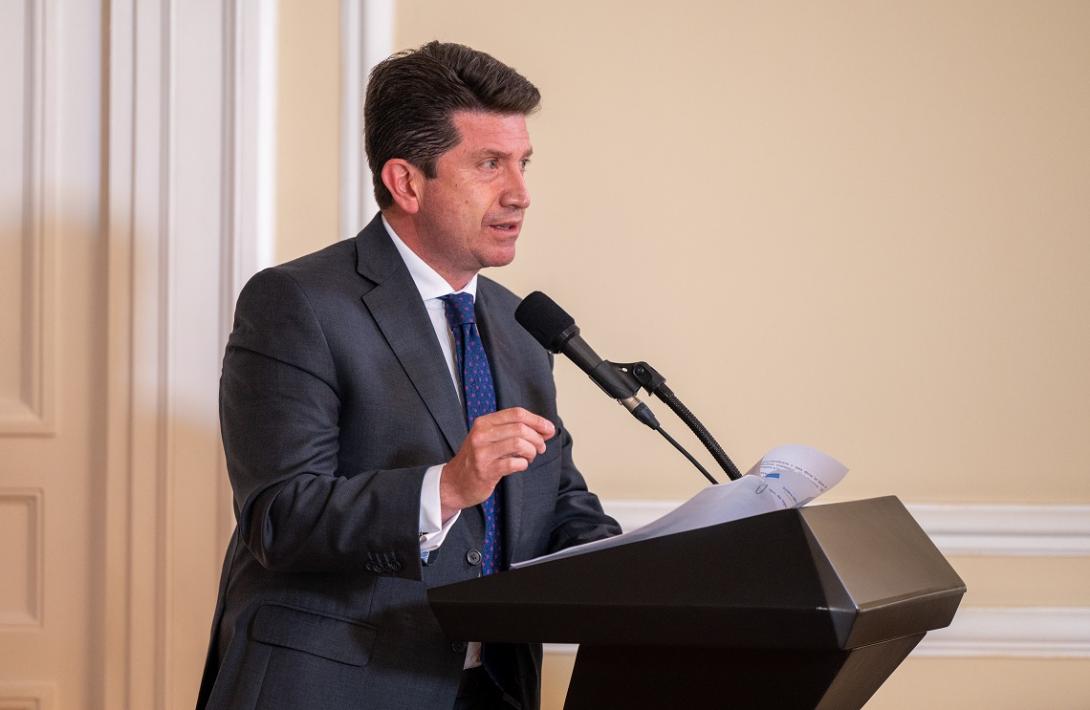The United Nations Office on Drugs and Crime (UNODC) reports a 7 percent decrease in the area planted with coca in 2020, compared to 2019.
The departments with the greatest reduction are Caquetá (-54 percent), Putumayo (-20 percent) and Nariño (-17 percent), according to the UNODC report.
The president of the Republic, Iván Duque, accompanied by of the Representative of the United Nations Office on Drugs and Crime in Colombia (UNODC), Pierre Lapaque, together with the ministers of Defence and Justice, Diego Molano and Wilson Ruiz, announced that for the third year in a row Colombia presented a reduction in the area planted with coca, going from 154 thousand hectares (in 2019) to 143 thousand hectares (in 2020), which represents a decrease of 7 per cent.
"In these almost three years of government, we have reduced illicit plantations by close to 20 percent. We will not stop doing any kind of operation to continue to face this problem," said President Duque categorically.
With this new reduction, the country went from 154 thousand hectares planted with coca in 2019 to 143 thousand in 2020, according to data of the UNODC Integrated Illicit Plantation Monitoring System (SIMCI).
The representative of the United Nations Office on Drugs and Crime in Colombia, Pierre Lapaque, acknowledged that, although there are the departments of Norte de Santander, Nariño, Putumayo, Cauca and Antioquia, where more than 80 percent of the coca in the country is planted, the Military Forces have done a great job for the reduction of the illicit plantation cultivation, and for eradication, and finding, as happened in the year 2020. "Last year, more than 505 tons of cocaine were found by troops. It is a great effort made by the Military Forces in this country,” Lapaque said.
For his part, the Minister of Defense, Diego Molano, highlighted that last year the Military Forces and the National Police eradicated 130 thousand hectares of coca plantations, being the highest figure in recent years.
“The coca hectares eradicated in 2020 generated direct economy damage to criminal groups by more than 302 million dollars that they now cannot use for their criminal operations,” Minister Molano revealed on Wednesday.
In addition, the Minister of Defense highlighted that during this year more than 100 microtrafficking and drug sales places have been destroyed and those responsible for those places have been prosecuted.
"We celebrate that for the third consecutive year the United Nations reports a decrease in illicit coca plantations as a result of the Comprehensive Action of the National Government,” said Justice Minister Wilson Ruiz.
The departments that have reported the greatest reduction in the area reported conducted by 2019 and 2020 are associated with areas with a historically significant concentration such as Caquetá (-54 percent), Putumayo (-20) percent and Nariño (-17 percent).
The full report of the Monitoring of Territories hit by Illicit Plantations in Colombia for the year 2020 will be presented in July with the integration of data according to the dynamics of the territories and the analysis of the figures.
Source: Defence Sector Communications Office – Ministry of National Defence

